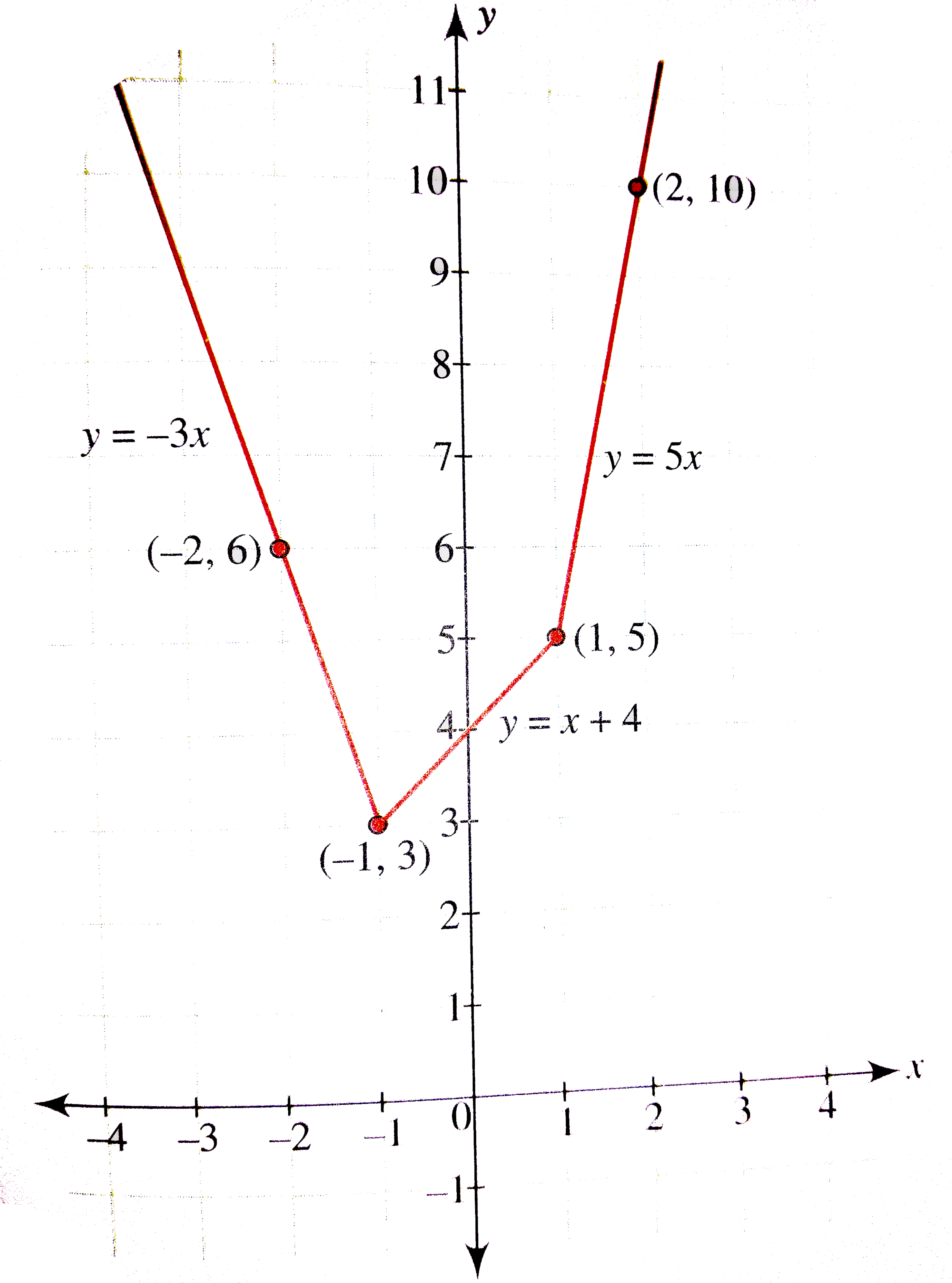Let f(x)=x+2|x+1|+2|x−1|. Find the values of k if f(x)=k
(i) has exactly one real solution,
(ii) has two negative solutions,
(iii) has two solutions of opposite sign.
Video Solution
Text Solution
Let f(x)=x+2|x+1|+2|x−1|
y=f(x) changes definition at x=−1andx=1.
Since the graph of the function is a straight line in each region (−∞,−1),(−1,1)and(1,∞), we need to check the values at some particular values of x to draw the graphs.
f(−2)=−2+2(1)+2(3)=6
f(−1)=−1+2(0)+2(2)=3
f(1)=1+2(2)+2(0)=5
f(2)=2+2(3)+2(1)=10
Thus, we plot the points (−2,6),(−1,3),(1,5)and(2,10).
Plotting these points and connecting with the straight line, we have the following graph.

For the equation f(x)=k to have exactly one real root, the line y =k must intersect the graph of y=f(x) at the point (−1,3), hence the value of k is 3.
For the equation f(x)=k to have two negative real roots, the line y=k must intersect the graph of y=f(x) at the point between y=3andy=4, hence the values of k are (3,4).
For the equation f(x)=k to have real roots of opposite sign, the line y=k must intersect the graph of y=f(x) above y=4, hence the values of k are (4,∞).
|
Updated on:21/07/2023
Topper's Solved these Questions
- BOOK - CENGAGECHAPTER - GRAPHS OF ELEMENTARY FUNCTIONS EXERCISE - Exercise34videos
GRAPHS OF ELEMENTARY FUNCTIONS
- BOOK - CENGAGECHAPTER - GRAPHS OF POLYNOMIAL AND RATIONAL FUNCTIONSEXERCISE - Exercise13videos
GRAPHS OF POLYNOMIAL AND RATIONAL FUNCTIONS
- BOOK - CENGAGECHAPTER - GRAPHS OF TRIGONOMETRIC FUNCTIONSEXERCISE - Exercise22videos
GRAPHS OF TRIGONOMETRIC FUNCTIONS
Similar Questions
Knowledge Check
- Question 1 - Select One
Let f(x)=2|x|−1x−3
Range of the values of 'k' for which f(x)=k has exactly two distinct solutions:A(−2,13)B(−2,1]C(0,23]D(−∞,−2) - Question 2 - Select One
Minimum integral value of k for which the equation ex=kx2 has exactly three real distinct solution,
A1B2C3D4 - Question 3 - Select One
Let f(x)=sin−1x−cos−1, x, then the set of values of k for which of |f(x)|=k has exactly two distinct solutions is :
A(0,π2]B(0,π2]C[π2,3π2)D[π,3π2]
Find the value of k for which the system kx+2y=5 3x+y=1 has (i) a unique solution, and (ii) no solution.
View SolutionFind value of k if (k2−1)x2+4x+1=0 has one root = -1
View SolutionFind values of k for which the equation ∣∣x2−1]+x=k has (i) 4 solution (ii) 1 solution (ii) 3 solutions (iv) 2 solutions
View SolutionThe equation sinx=x2+x+1 has (A) one real solution (B) n real solution (C) more thanone real solution (D) two positive solutons
View SolutionIf f(x)=|x+1|−2|x−1| then (A) maximum value of f(x) is 2 (C) there is f(x)=2. (B) there are two solutions of f(x)=1 (D) there are two solutions of f(x)=3.
View Solution

